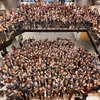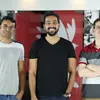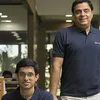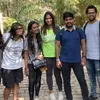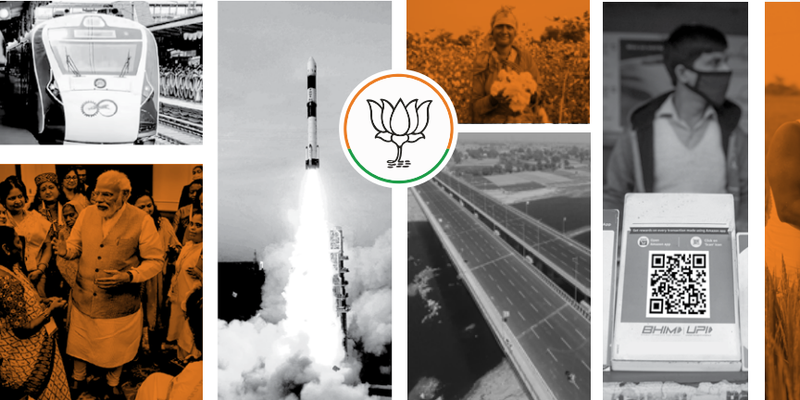[Product Roadmap] In 7 years, how Great Learning’s tech has helped it clock a 150 pc revenue growth
A product roadmap clarifies the why, what, and how behind what a tech startup is building. This week, we feature Great Learning, a bootstrapped edtech platform that has seen a 150 percent growth in revenue.
In 2013, Mohan Lakhamraju, a Stanford graduate and former India MD of Tiger Global Management, noticed a massive gap in the skilling segment as there were fewer graduates who weren’t skilled enough for the job market.
He realised professionals rarely have the luxury to pursue an education mid-career, for it often meant taking a break or shifting to a new location. Startups in the online education space are making the most of this opportunity - , , , and Coursera are some examples.
This need prompted him to start Great Learning along with Arjun Nair and Hari Krishnan Nair. During the pandemic, the startup has seen an increase in demand for digital competencies like data science, analytics, AI, machine learning, cloud computing, cybersecurity, and digital business over the last year.
The bootstrapped edtech startup said its annual revenue rose 150 percent to Rs 325 crore, as the coronavirus-induced lockdown boosted demand for its learning courses aimed at equipping professionals with new skills.
“The focus of our technology has been to deliver high quality outcomes at scale. In the past seven years it has evolved, from simple content sharing/assessments for about 30 learners in Gurugram in 2013 to a full-fledged learning platform geared towards delivering learning and career outcomes at scale,” explains Arjun.
Initially, the challenge was to automate workflows, but today it serves over 500,000 learners from 140+ countries who enroll into both the paid and free programs. Great Learning delivers over two million plus hours of learning in a month.

An overview of Olympus
“We took over four years after we started to cumulatively get to one million hours,” adds Arjun. Olympus, Great Learning tech's platform serves three stakeholders - students, faculty, and internal staff (program, admissions, career services team).”
For students, the features are built to ensure they have access to what they need to learn and when they need to learn. The platform ensures they stay motivated, engaged and are able to complete their learning milestones, interact with peers, engage with faculty, and avail of career services.
For faculty, it is really about increasing their reach and impact. Traditionally high-quality faculty at say, an IIT would be able to impact 50 or 100 students.
“Using our platform, they can create meaningful learning experiences and transformative career experiences to 10 times the number of students (through a combination of effective faculty utilisation, recorded videos, personalised student feedback and weekly structured interaction among other innovations),” adds Arjun.
The backbone
He explains the trick lies in amplifying the reach of some experienced and skilled faculty members and create amazing learning experiences for students. For internal team members, it is really about understanding each student’s career/learning aspirations and interventions on time if the student finds some aspect of their learning experience challenging.
“Through these mechanisms, we ensure 95 percent of our students complete our programs (which is the highest in the industry). Similarly, our faculty and program feedback is highest among our competitors (4.6+ /5) according to Google/Mouth Shut reviews. etc.,” explains Arjun.
This technological backbone is what enables Great Learning to execute these programs with thousands of faculty members and students at scale and yet receive excellent program satisfaction and career outcomes.
“During the pandemic, we opened up our technology platform, Olympus Digital Campus, to create a self-serve platform for colleges and faculty across India to conduct live classes, proctored examinations, track student progress and provide career services. The platform was used by 100+ colleges to deliver over 100,000 sessions to their students. Again, this is a new initiative we started in the last three months and achieved scale using our technology infrastructure,” says Arjun.
It also has a free resource called Great Learning Academy that anyone can enrol through web/mobile and have access to high quality learning material.
What does it offer?
Great Learning’s program offerings fall under the following categories:
- Online mentored learning programs for students from around the world. In this mode, the platform follows a flipped classroom approach where the student watches recorded videos and then attends a live session online over the weekend with a mentor (who is an industry expert). Students clear their doubts, learn how to apply concepts to real world problems and interact with each other during these sessions. There is no physical meeting.
- Blended (online and at physical classrooms across six cities in India). In this mode, students come to one of the physical centres once a month over the weekend and continues learning using the platform for the rest of the month.
- Full-time bootcamp - This is for early career professionals and students who attend class every day (while doing assessments and other projects online). Technology is used to see if there is any plagiarism/copying, etc and to provide career services and placements.
Different types of learners enrol into these programs based on their work experience, geographic constraints and career aspirations. These three delivery formats are substantially different and cater to different needs and create outcomes according to the learner’s aspirations.
With such scale, the platform also had to be robust enough to handle millions of processes online (including delivery of video with appropriate security features), for which it uses AWS infrastructure.
Evolution of the MVP
“When we started in 2013-2014, edtech in India was almost non-existent. Global players like Coursera were there, but it was not a viable product in India during that time. It was largely self-serve and since we had an edtech background, we knew that in India, learners wanted a lot more personal interaction with faculty,” explains Arjun.
He adds that there was no domestic or even global edtech company looking at how to scale the human aspects of education using technology.
Thus, Great Learning’s focus at that point was to get its business model right – “we wanted to ensure we could actually deliver high quality learning and career outcomes (for which human interaction was crucial) to remote students online using process excellence and leveraging technology,” says Arjun.
The first product was a simple mobile responsive website and an internal learning management system to track students and share content with them. The team put together the prototype fairly quickly and took it to the market.
While a lot of time was spent in designing the curriculum, delivery, etc (which was really the product they were selling) the actual building of tech infrastructure for the initial prototype happened quickly as it was just a website that described the offering and an off-the-shelf learning management system.
“Our first product catered only to blended operations, because that is how we started. It was mainly for faculty scheduling, program feedback and student tracking at scale. However, as we started offering all these different formats, we ended up having different needs for tracking and services and built those features as well. For example, we now conduct several thousand live classes a day for our online mentored learning programs using hundreds of faculty members in a day. So, we had to build technology to schedule all those classes, provide individual links to students (for attendance tracking and faculty feedback) dynamic resource (faculty) allocation, etc,” says Arjun.
“Being bootstrapped, we basically relied on a lot of manual work in the beginning. But it enabled us to understand our customers really well and what bottlenecks will look like when we scaled up to a much larger operations,” he adds.
For the first year or maybe two, the team’s focus was on building technology for creating a backbone for operational excellence. Arjun explains it is like Amazon’s logistics. For all the different formats described earlier they have built technology for ensuring the highest quality learner experience is provided to students.

Image and data : Great Learning
Building for scale
“Once the business model was established and we knew what to build and scale up, our head of technology, Vinod Venkatraman joined us after a year. Vinod is a junior of Mohan’s and came with nearly a decade of experience in high growth startups and was at Flipkart where he was the architect for its Big Billion Days sales and is an expert at building highly scalable solutions. Vinod also brought in our initial key tech team members that enabled us to build the features described earlier as we started scaling up,” says Arjun.
“Generally, we try to understand what will curtail growth in the coming months and try to solve the problem a few months in advance. Sometimes, it is about providing superior operational excellence and sometimes it is about sales and marketing."
For the first few years the team focussed on automating various operational tasks such as scheduling, feedback, grades, student progress, student motivation, etc to ensure learning outcomes happen. The team was sure it would not accelerate on growth unless it was absolutely sure to create outcomes at scale and had to build the technology and operational capability for it.
The infrastructure focus
When the team started adding more centres and faculty it became operationally impossible to manage things with a basic technology infrastructure. Even with just six centres across the country and a dozen faculty members, scheduling the sessions and managing thousands of students became impossible for a few staff members without robust technology.
That is when it really invested in automating the workflows and building an infrastructure for operational excellence. Once the infrastructure was in place, they found that all the sessions were getting excellent feedback and operations was no longer a constraint for growth.
“We started investing in technology for sales and marketing… customer segmentation, personalised onboarding experiences, etc, which enabled us to open up another growth driver. Our biggest challenge was doing a lot with a small and lean team – all way from collecting payments to issuing digital certificates. We were bootstrapped and we wanted to have the culture of being very efficient and lean (which is crucial for successful startups),” says Arjun.
The team started questioning the roles of everyone in the team - what is the role of the product manager? What is an engineer supposed to do? There was no typical QA team for Dev Ops or Data Base administration or project management. The Product Manager doubled down to do project management and QA along with product management.
An engineer went all the way from coding, to debugging and deployment. Everyone was encouraged to scale up that enabled greater ownership, faster execution and overall better product, while also remaining cost-effective.
The user feedback loop
One of the most impactful features was a simple 5-star rating collected after very session on the website and now app. The team built this in 2015 way before everyone started talking about NPS and faculty feedback.
"We got the idea from Uber and received insight on which faculty was doing a great job, who needed to be coached (and in what direction), which student was struggling, who needed personalised attention, which batch is doing well, etc. All this was then available on a management dashboard for the leadership team to monitor. This feedback we collect about every aspect of the student’s learning journey is crucial for us to understand and decide what to improve and build,” says Arjun.
The team learned not just from global edtech companies, but also from Amazon (on building excellent operational/logistics/utilisation capabilities) and Uber (on user experience and feedback), etc.
The best analogy is how Amazon is able to leverage technology to deliver the package without loss super-fast to your address within a few hours of ordering. The experience is consistent nearly 100 percent of the time at scale because of technology. That is exactly what Great Learning does, emphasises Arjun.
What lies ahead?
The team is now focussed on:
- High quality faculty/mentors for live teaching is a constraint. The team has built a faculty scheduling algorithm to solve this – this is an open ended NP hard problem or constraint solving problem. It has also created a breakthrough state-of -the-art algorithm to efficiently and optimally allocate faculty.
- The other project was an AI and ML hackathon platform that it built from scratch. Thousands of students from around the world participate in these hackathons to get a real world feel of how to work on such problems in the industry.
“There are a number of interesting problems to solve for edtech in general and we are focussed on these. Directionally, these are around improving personalisation, learning and career services and video content delivery for low bandwidth, etc. Many experiments are being done to solve these problems and we will roll them out as they mature,” says Arjun.
Edited by Rekha Balakrishnan






![[Product Roadmap] In 7 years, how Great Learning’s tech has helped it clock a 150 pc revenue growth](https://images.yourstory.com/cs/2/a9efa9c02dd911e9adc52d913c55075e/Prm-2-1609252384693.png?mode=crop&crop=faces&ar=2:1?width=3840&q=75)

